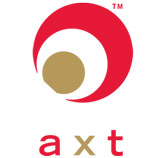- News
21 June 2013
TriQuint-supported NASA Mars mission reaches turning point
RF front-end component maker and foundry services provider TriQuint Semiconductor Inc of Hillsboro, OR, USA reflected on its role in helping land NASA’s Curiosity rover safely on Mars as program managers say the mission is reaching a key turning point (finishing investigations in Mars' Gale Crater for the last six months, before shifting to a distance-driving mode headed for an area 8km away, at the base of Mount Sharp). TriQuint has supported NASA programs for decades, including devices aboard the Sky Crane landing radar of the Mars Science Laboratory (MSL) and its Curiosity rover.
On 6 August 2012, MSL’s Sky Crane lowered Curiosity onto the Martian surface using a pre-programmed landing sequence that was vital since the communication time delay between the planets meant Curiosity's final descent could not be piloted from Earth. TriQuint delivered four Sky Crane landing radar components that helped to enable a safe touchdown. The Sky Crane’s success was the culmination of four year's work by TriQuint engineers in consultation with NASA's Jet Propulsion Laboratory (JPL).
Soon after landing, Curiosity confirmed that the Gale Crater site had once been capable of supporting microbial life. Since then it has found an ancient stream bed and allowed scientists to determine that the Martian radiation environment is similar to what astronauts experience aboard the International Space Station. The rover collected rock samples containing sulfur, nitrogen, hydrogen, oxygen, phosphorus and carbon, leading scientists to believe that Mars could have supported microbial life billions of years ago. The MSL is now nearly half way through its planned 23-month mission.
TriQuint pseudomorphic high-electron-mobility transistor (pHEMT) products in the MSL's landing radar included the TGL4203-SM attenuator, TGA4517 Ka-band RF power amplifier and TGC1430G frequency tripler (all fabricated using the firm’s 0.25-micron technology) and the TGA4508 (a Ka-band low-noise amplifier that used a 0.15-micron TriQuint process). Before assembly into the MSL, the devices endured an arduous space-qualification screening process far exceeding the requirements of typical commercial or defense programs.






